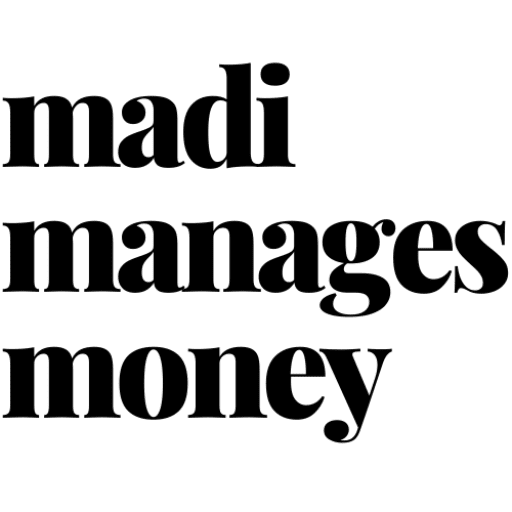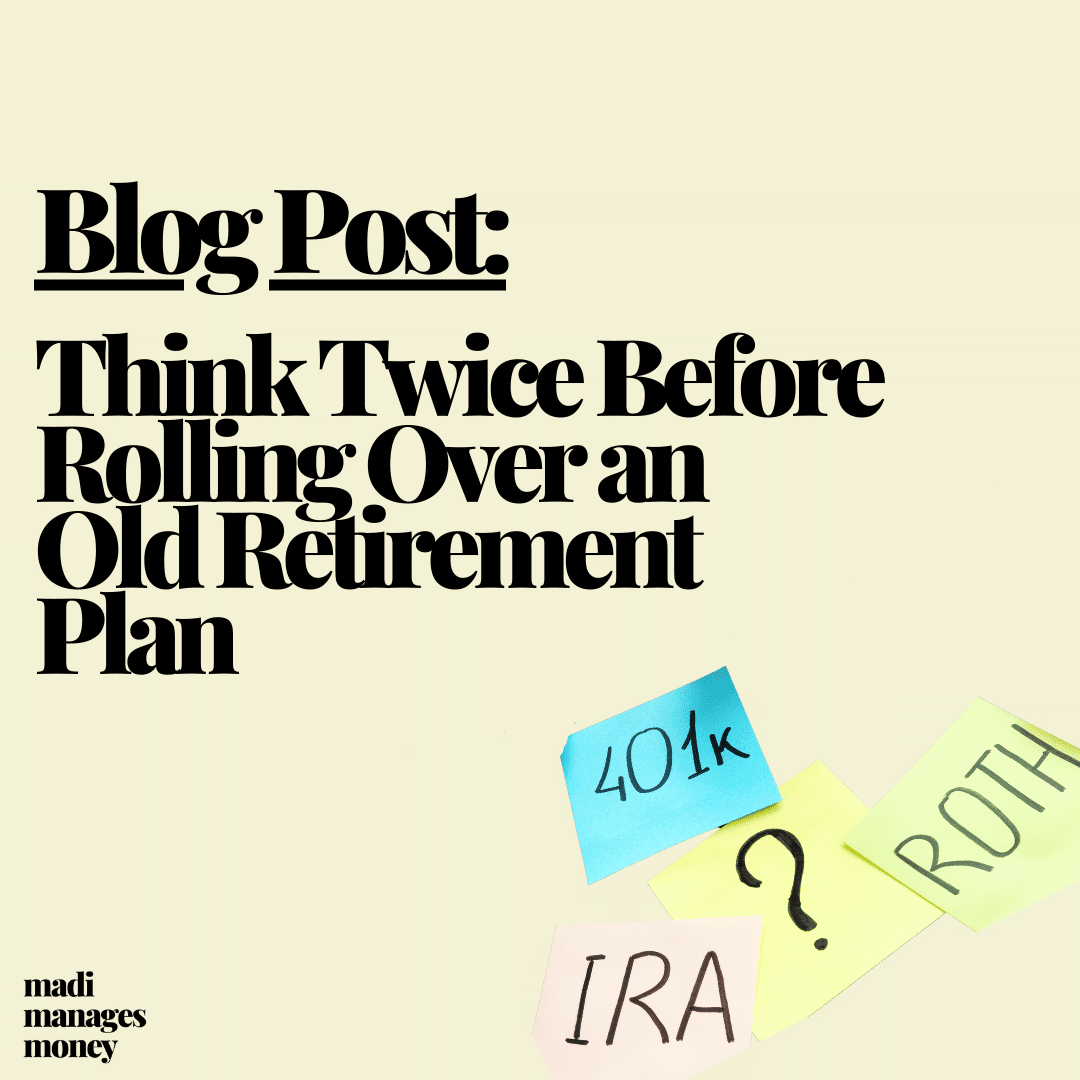If you’re a high earner (or plan to be one someday), rolling over an old retirement plan into an IRA might not be the move.
Roll over your old 401(k), they said. It will save you on admin fees and give you more investment choices, they said.
At least, this is what conventional financial advice might suggest.
This blog post explores why rolling over that old retirement plan might not be the best option, especially if you earn enough to be phased out of contributing to a Roth IRA.
The highlights of doing a rollover from your retirement plan to an IRA.
Two of the most widely-touted benefits of rolling over your old workplace retirement plan (i.e., 401(k), 403(b), etc.) are gaining access to more investment choices and saving on administrative fees. Online brokers (like Fidelity or Vanguard) offer thousands of investment choices and rock-bottom costs.
I’d argue, however, that this is somewhat outdated advice, unless you work for a very small company. And even then, these benefits are usually marginal at best.
Today, big companies create best-in-class investment menus for their employees. Menus include top-notch target date investments and low-cost index funds. As a retirement investor, this is about all my little heart could desire.
Further, employers act as fiduciaries of your retirement plan, which means they’re required to make choices that are in your best interest. This doesn’t mean they’re going to pick investments that outperform (that’s impossible to do), but they’re required to keep the investments in the retirement plan up to snuff.
When it comes to cost savings, it’s unlikely you’re actually paying higher expenses in a company retirement plan. By using economies of scale, pooled retirement plans lower the burden on the individual by spreading administrative fees. They can also negotiate access to investments with institutional (read: low) pricing. You can’t do this in a brokerage account with your assets alone.
Contrary to what conventional advice may suggest, the two primary benefits of doing a rollover are marginal at best. As it turns out, if you’ve had this camping on your to-do list for the past two years, that might be a good thing.
So, you earn too much to contribute to a Roth IRA?
Now, let’s explore what happens when you encounter a good problem to have: your adjusted earnings exceed the Roth IRA contribution limits. Once you earn over $153,000 as an individual or $228,000 as a married couple filing jointly, you can no longer contribute *directly* to a Roth IRA.
It’s at this point that many high earners look to do something called a backdoor Roth IRA contribution. A backdoor Roth IRA contribution is a totally above-board strategy for getting money into your Roth IRA by contributing it to a Traditional IRA first. Then, you “convert” it to your Roth IRA.
(This will all sound a little crazy, because it is. The fact that the IRS permits backdoor contributions is all the confirmation I need to know that most adults in power have no idea what they’re doing.)
A backdoor Roth IRA contribution works like this. I’ve heard some advisors refer to this process as a “two-step Roth” for obvious reasons.
- You contribute up to $6,500 a year to a Traditional IRA on a nondeductible basis. (Based on 2023 limits.)
- You promptly transfer your nondeductible contribution from your Traditional IRA over to a Roth IRA. (This transfer is technically called a Roth conversion.)
Your backdoor Roth IRA contribution will be tax free if two conditions are met.
- You make the initial $6,500 Traditional IRA contribution as nondeductible. (Nondeductible means you already paid tax on it.)
- You have NO pre-tax assets in any Traditional IRAs.
This brings us back to our old retirement plan.
Had you done that rollover into a Traditional IRA, you would have effectively shot yourself in the foot. You have a pool of pre-tax assets sitting in your Traditional IRA that’s gonna trigger a tax bill charged on the amount you convert to your Roth.
Standing in your way is something called the pro-rata rule.
How does the pro-rata rule work?
The pro-rata rule is a pesky Roth conversion detail taxpayers tend to learn about the hard way, after it’s too late.
The rule requires you to consider all of your Traditional IRA assets in aggregate. Those Traditional IRA assets will fall into one of two buckets: pre-tax or post-tax.
Pre-tax assets are contributions you’re yet to pay income tax on, like Traditional contributions to your old retirement plan. Post-tax assets come from nondeductible contributions you made into your IRA or employer plan. For most of us, the vast majority of our Traditional IRA assets are pre-tax.
Assuming you made pre-tax contributions to your old retirement plan, when you do a rollover into a Traditional IRA, you’re subjecting yourself to the pro-rata rule to a greater degree.
And no, opening up a fresh, empty Traditional IRA just to do your backdoor contribution will not circumvent the rule. Remember: we have to include all Traditional IRA assets in aggregate.
Calculating your tax bill on Roth conversions😬
Between the terms nondeductible, prorated, and conversions, I probably have your head spinning. Let’s return to our comfort zone with an example.
Pretend you have $13,000 in your Traditional IRAs. This $13,000 could be split among several IRAs or consolidated into one. Doesn’t matter – it all counts!
The $13,000 came from an old Traditional 401(k) that you rolled over. All of this money is “pre-tax.”
You’re married. You and your spouse’s adjusted earnings exceed $228,000, so you’re phased out of contributing directly to a Roth IRA. You decide it’s time to make a backdoor Roth IRA contribution.
When you do so, a percentage of your backdoor Roth contribution will be taxable. This percentage is based on the proportion of pre-tax assets in your Traditional IRA relative to those that you’ve already paid taxes on.
Here’s the breakdown.
- You add $6,500 to your Traditional IRA on a nondeductible basis.
- You already have $13,000 in pre-tax money sitting in your Traditional IRA.
This brings the total value of all assets in your Traditional IRAs to $19,500.
- $6,500 / $19,500 = 33% non-taxable proportion of conversion
- $13,000 / $19,500 = 67% taxable proportion of conversion
When you convert the $6,500 contribution to your Roth, $4,333 would be considered taxable income. ($6,500 * 67% = $4,333)
A solution: Consider rolling into your new employer’s retirement plan instead
A way to steer clear of the wrath of the pro-rata rule is by keeping your retirement assets in your workplace accounts (like a 401(k), 403(b), 457, or TSP) instead of IRAs. These workplace plans are out of scope for the pro-rata rule.
(Note, however, that SEP-IRAs and SIMPLE IRAs are in scope for the pro-rata rule. Doing a Roth conversion with pre-tax money in these accounts, even if they’re with an employer, will trigger a tax bill.)
This makes rolling that old retirement plan into your new company’s offering a pretty attractive option. Further, if you’ve already done rollovers into a Traditional IRA, that’s okay. You can roll your IRA back into your current company’s plan. Consolidating your accounts into one place can make things easier to manage for you.
Before attempting to “roll in” to a workplace account, contact your plan’s administrator to confirm it accepts rollovers into the program. Most do but not all.
If you do a rollover, elect to do a “direct rollover” instead of a “60-day rollover.” Direct rollovers transfer your money (either electronically or by check) straight from your old plan to your new one. These are generally easier for you and won’t trigger a hefty tax bill.
Conclusion
If you’re a high earner, the most tax-efficient way to make backdoor Roth IRA contributions is by keeping your pre-tax investments in workplace retirement plans.
It’s not the end of the world if you do have to pay tax on Roth conversions, especially when converting smaller amounts, but it’s like carrying water in a leaky bucket. The higher tax bracket you fall into, the more holes in your bucket, and the less benefit there is to you to doing conversions.
If you have Traditional IRA assets holding you back from making backdoor Roth IRA contributions, schedule a free consultation with me. Determining tax-efficient ways to get more money invested is something I am proud to do for my clients.
The opinions voiced in this material are for general information only and are not intended to provide specific advice or recommendations for any individual. To determine which investments may be appropriate for you, consult with your financial advisor.

